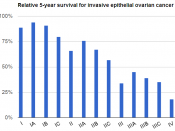The most common risk factors for cancer are heredity, where it is passed down from generation to generation; age, which can be targeted to several different age groups; race, which is targeted to specific individuals within a heritage group; and the unknown.
Heredity transfer does increase the risk for these type of cancers which include but are not limited to testicular, colon, breast (although very rare), ovarian, and prostate. If there is a history of these types of cancers in the family all precautions should be taken to prevent or catch the disease early in the stage. Therefore, testing should be completed on an annual basis.
Age can also be a factor with several different types of cancer which can be but are not limited to colon, rectal, stomach, breast and kidney which is targeted at the 50 and over generations. Prostate cancer is targeted at the 65 and older generation.
Uterine or Endometrial cancer usually occurs after age 55 but has been seen as young as 14 in women. Pancreatic cancer in men and ovarian cancer is most seen in women over 60; and oral cancer after age 40 and is most dominant with men. The younger generations aged 20-35 are highly at risk for testicular cancer. Multiple myeloma is diagnosed as early as 70 years old.
Race and/or sex also play a role in cancer traits. But cancers that can be somewhat controlled are the cancers that can be prevented with healthy diets, no smoking or tobacco chewing, one sex partner, and sun radiation protection are just a few behaviors that can be changed or modified to decrease the risk of be inflicting with cancer.


